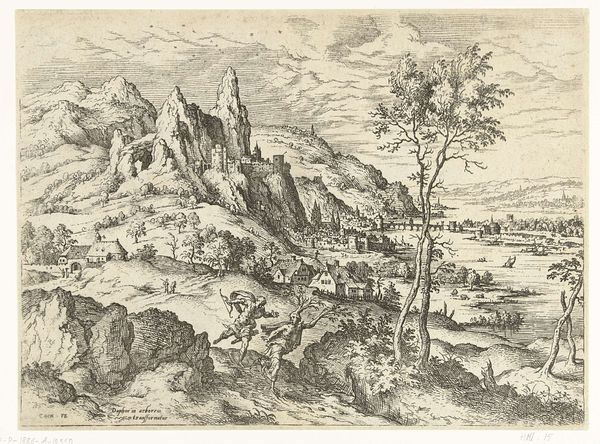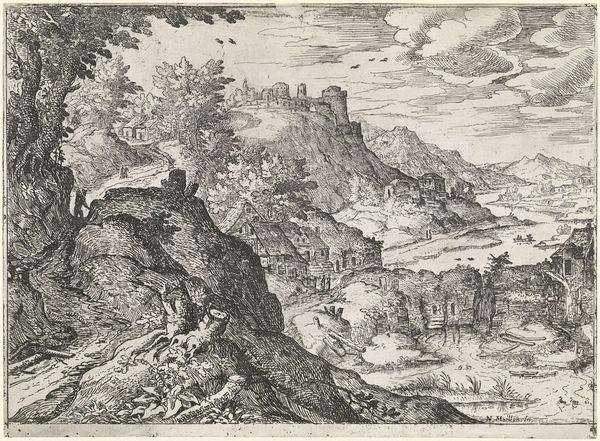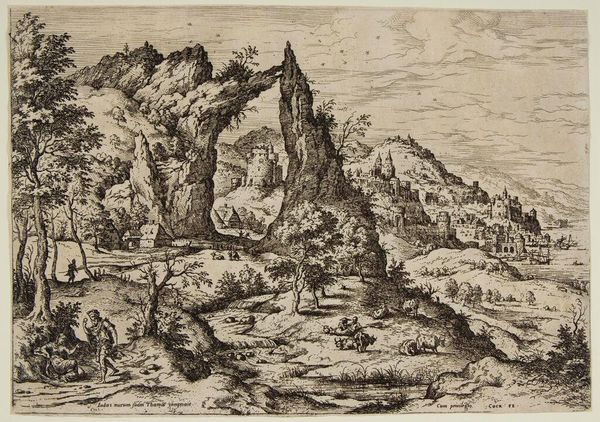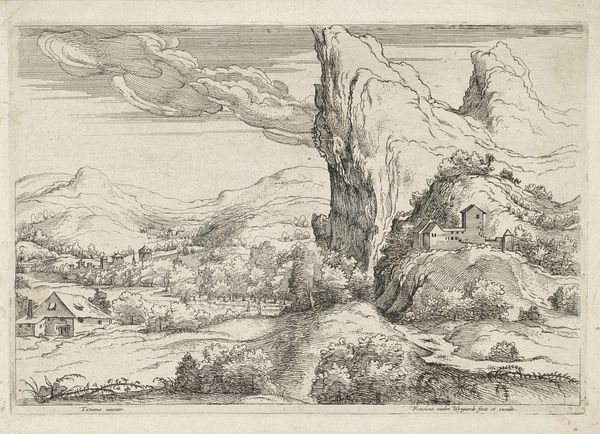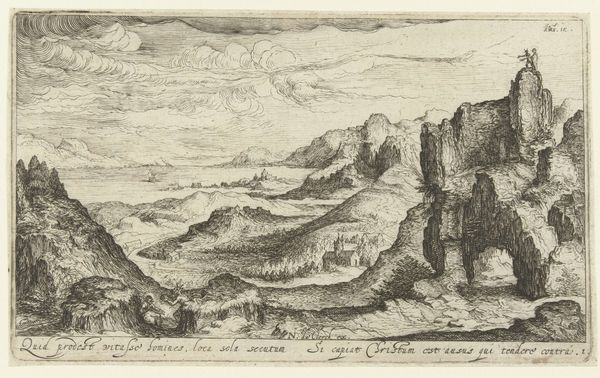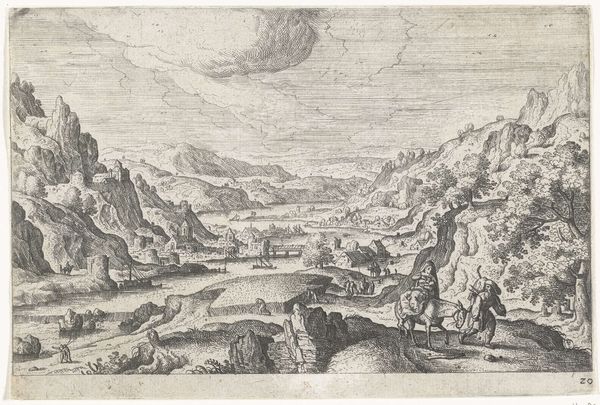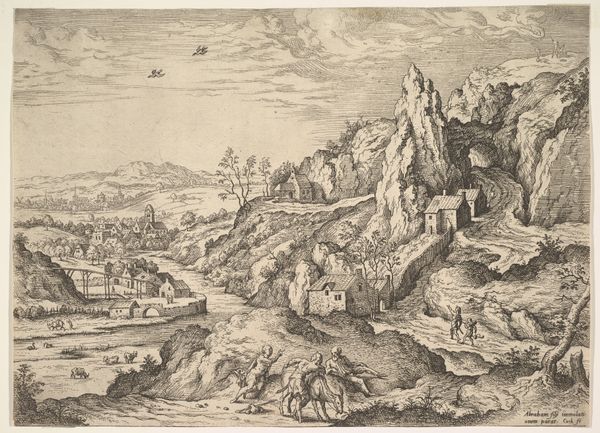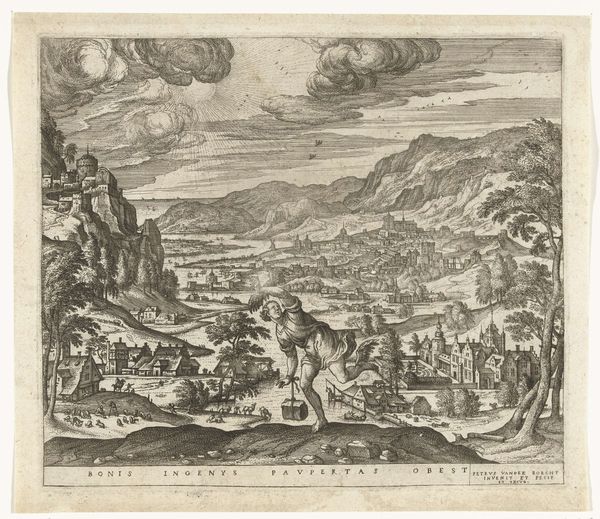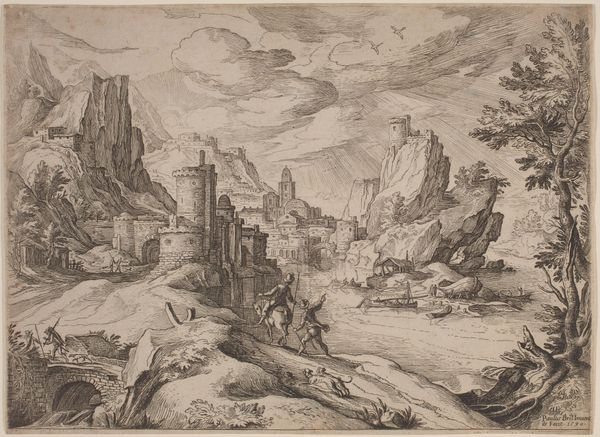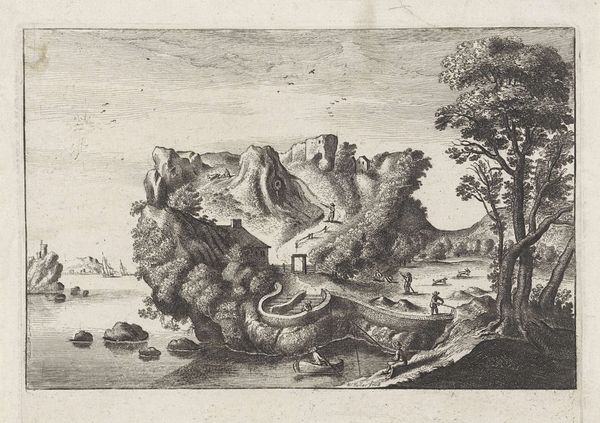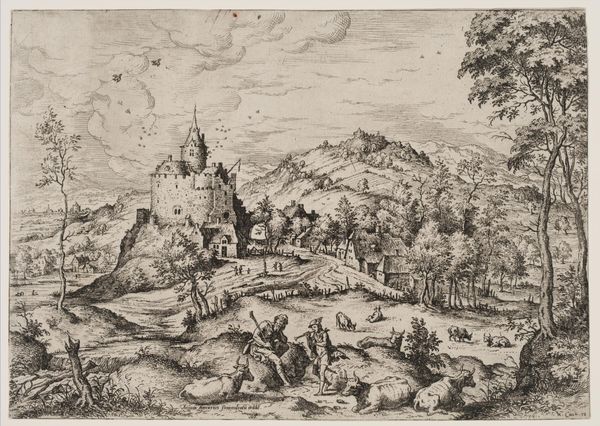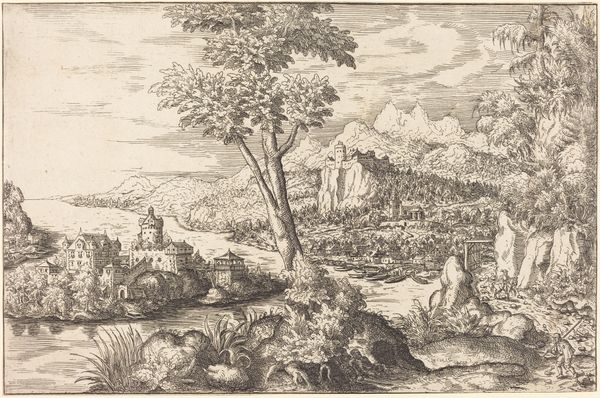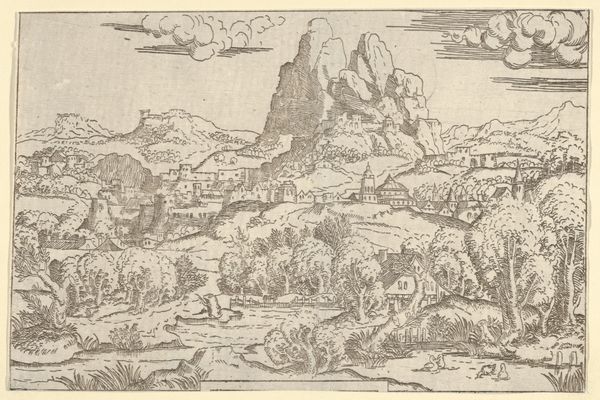
drawing, etching, ink
#
drawing
#
ink drawing
#
pen drawing
#
etching
#
landscape
#
mannerism
#
ink
#
cityscape
#
history-painting
Dimensions: height 225 mm, width 320 mm
Copyright: Rijks Museum: Open Domain
Editor: This is "Juda en Tamar," an etching by Hieronymus Cock, made before 1558. The landscape has this fantastical, almost dreamlike quality with its exaggerated rock formations and tiny figures. What sort of story do you think the artist is trying to tell here? Curator: Well, the biblical reference in the title points us towards the story of Judah and Tamar. Notice how Tamar, disguised as a prostitute, sits waiting in the landscape. It is an interesting depiction because these landscapes aren’t just backgrounds. The setting *is* the symbol: a stage upon which moral dramas play out. Consider how often rocks are used to symbolize steadfastness, refuge, or even the divine itself. Editor: So the landscape isn't just scenery; it reinforces the narrative's meaning? Curator: Precisely! And look closer; what’s particularly evocative here is the dramatic contrast between the natural, almost chaotic, landscape and the constructed order of the city in the distance. Do you see the imposing nature against the architectural symbols of human civilization? Editor: Now that you mention it, the architecture seems to be crumbling, overtaken by the natural landscape, perhaps suggesting a commentary on human folly. Curator: That's it exactly! The imagery speaks of nature as enduring. This piece highlights the symbolic power embedded in both natural and man-made elements to give a weight and lasting emotional charge to its cultural stories. Editor: I never considered landscape as such a key element in delivering stories. It gives me a fresh view on these older pieces. Curator: It is all about visual languages; once we recognize how symbols were once employed, these historical images unlock their hidden stories for us!
Comments
No comments
Be the first to comment and join the conversation on the ultimate creative platform.
